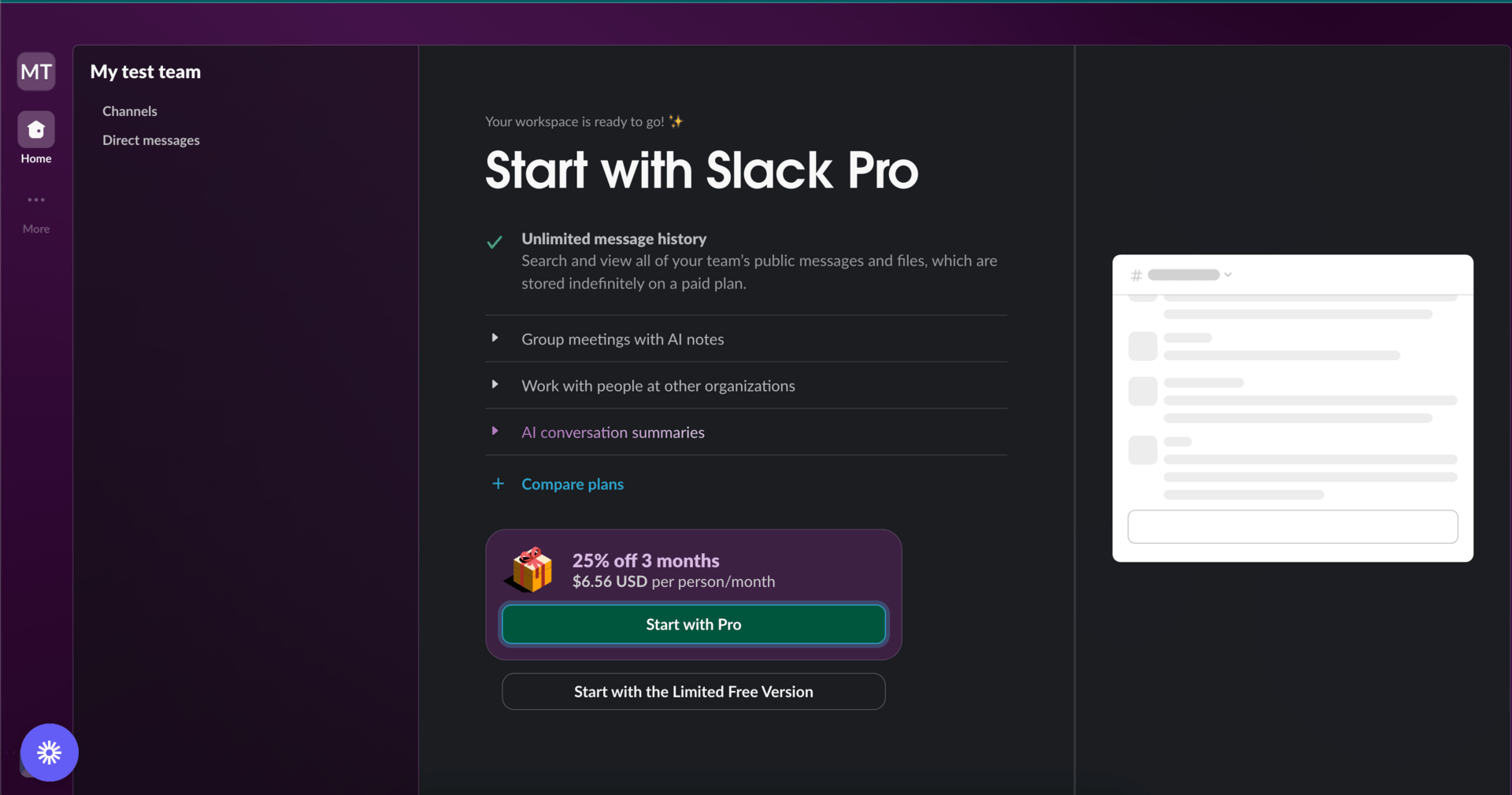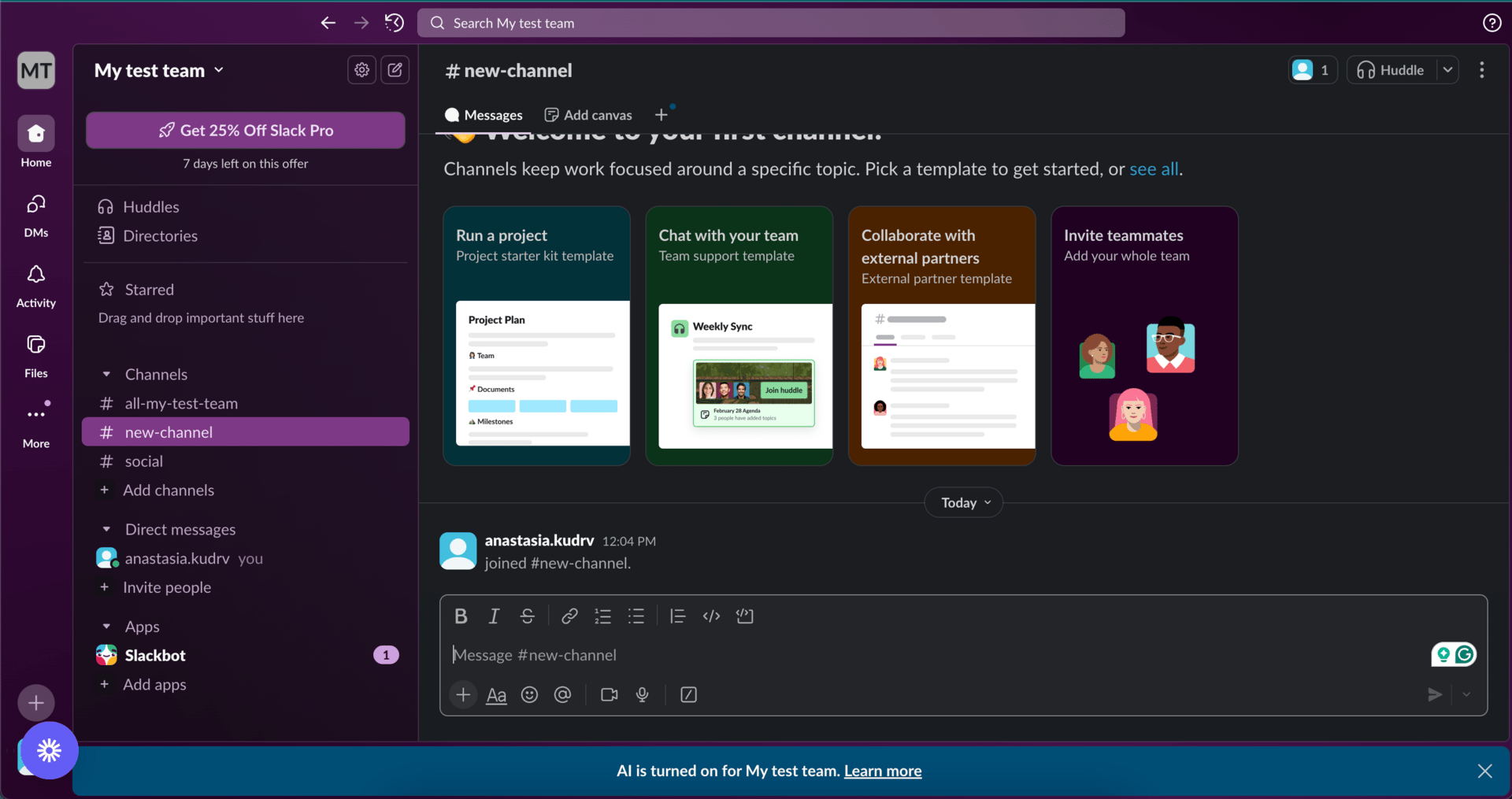Hi everyone! Moving into a new place got me thinking: time for some changes to Ghosted.
1. The newsletter is moving to Sundays. By Friday, I'm completely fried, and I'd rather write with a fresh mind over the weekend. Plus, it's a nice way to ease into the week — you get some ideas brewing by Monday morning.
2. We're here because we're obsessed with product and growth tactics we can actually use. So now, each issue will focus on one solid find I spotted (or implemented with a client) that week. I'll break down why it works psychologically and what happens when we mess it up (spoiler: users ghost us).
Steal of the week
When I first got into growth, one thing felt completely odd: upgrade prompts that show up right when you start using a product. You know those popups? Or the screens asking you to pay before you've even poked around?
As someone who loves PLG, it seemed wrong. Why push people to pay so early? It shouldn't work.
But it does.
Across the products I've worked with, these early upgrade prompts are consistently one of the most effective triggers. For one client, this trigger converted 64% of people to trial start compared to under 10% from other in-product triggers.
Look at Slack. I went through their onboarding again last week and noticed:
They ask you to upgrade basically as soon as you launch the product
They keep the upgrade option visible at the top so you can't ignore it (but it doesn't block you from using the product)
So why do so many products use early upgrade prompts, and why do they actually work?


Psychology behind why it works
A few reasons:
Fresh-Start Effect When people create a new account, they hit a "temporal landmark" — a clean slate moment. This makes them more motivated to make ideal, future-focused choices ("I'll do it right this time"). An upgrade option during this moment taps into that natural spike in commitment.
Implementation Intentions During onboarding, users are mentally planning how they'll use your tool. Showing them clear plan options (Free vs. Pro) helps them form "if-then" plans ("If I need X, I'll go with Pro"). It turns vague motivation into an immediate, concrete decision.
Status-Quo Bias The first choice sticks. Once someone identifies with a plan —even just by seeing Pro positioned as the path forward — they're less likely to change later. Early framing sets what feels "normal" going forward.

Mistakes that make users ghost
Any good tactic can be ruined if you implement it badly. Here's how we kill early upgrade prompts:
Making it unclear. What are they paying for? How much? What do they get? Your pricing page doesn't exist in a vacuum — it needs to build on everything before it: your marketing, your website, your onboarding. To convert early, the value and terms need to be crystal clear.
Building pressure before value. If I feel bullied, I'm not buying anything. A countdown timer won't seal the deal if the earlier steps — value recognition, clear terms, clear product format — didn't land first.
Bad timing. Even though it happens early, with PLG it's rarely the very first thing you see. You still want to walk users through a quick setup, get them invested, and introduce the paywall as a bridge to where they want to go — not as a roadblock.
How to implement like a pro
If you're adding early upgrade prompts, keep this in mind:
Know where people come from and make sure your value is clear across all those sources. No "effective solution to supercharge your business" nonsense. What value do you bring? How do you deliver it? What's your advantage? If it's too complex for people to figure out, maybe this strategy isn't for you.
Be clear about the terms. Free trial? Great. How long? What can I try? Do I need to enter a card? When will I be charged and how much? Can I cancel?
Don't lead with it, but don't hide it either. Get my attention with a quick setup, convince me I can solve my problem with your product, then introduce the paywall as a key — not a gatekeeper.

If you forget everything, remember this:
People don't mind paying for stuff. They hate losing money on something useless.

